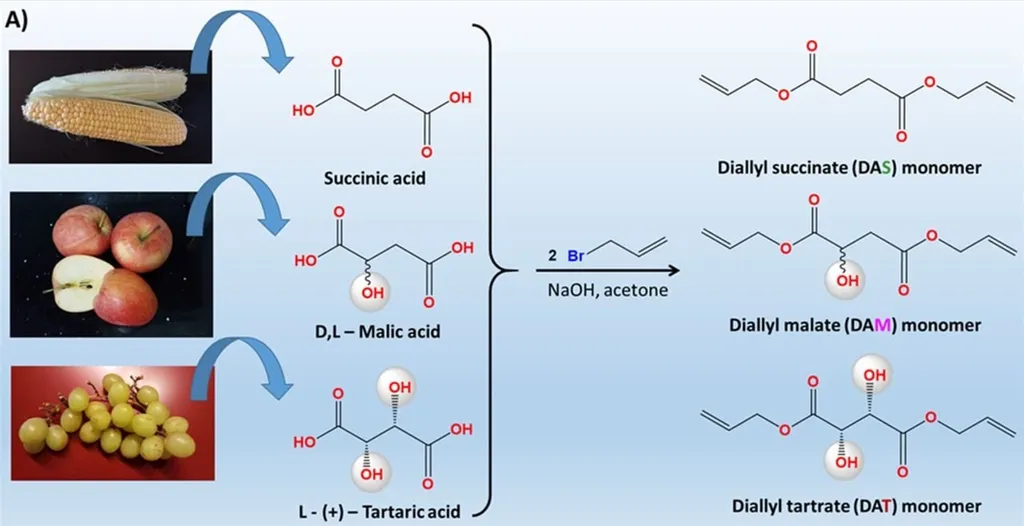In the rapidly evolving world of additive manufacturing, a groundbreaking development is set to revolutionize the way we think about 3D inkjet printing, particularly in the realm of biomaterials. Researchers at the Institute of Polymer Chemistry at Johannes Kepler University Linz in Austria have unveiled a novel approach to creating solvent-free, degradable resins tailored for 3D inkjet printing. This innovation, led by Stephan Haudum, promises to address some of the most pressing challenges in the field, particularly in applications requiring biocompatible and degradable materials.
Traditional 3D inkjet printing has long been hampered by the limitations of available photopolymers, which are often toxic and non-degradable. These constraints have significantly restricted the technology’s potential, especially in biomedical applications such as tissue engineering. Haudum and his team have tackled this issue head-on by developing a unique class of photomonomers based on amino acid phosphoramides (APA) and silyl ethers. These new materials are designed to be both biocompatible and capable of fast, tunable degradation, making them ideal for a wide range of biomedical applications.
The key to this innovation lies in the use of thiol-yne click chemistry, a versatile and efficient method for creating complex molecular structures. “By leveraging thiol-yne click chemistry, we were able to synthesize photomonomers that are not only biocompatible but also degrade at rates that can be precisely controlled,” Haudum explained. This level of control is crucial for applications such as tissue regeneration, where the scaffold must degrade at a rate that matches the growth of new tissue.
The implications of this research are far-reaching. For the energy sector, the development of biodegradable and non-toxic materials could lead to more sustainable manufacturing processes. Imagine 3D-printed components for renewable energy systems that can be easily recycled or biodegraded at the end of their lifecycle, reducing waste and environmental impact. This could be a game-changer for industries looking to adopt more eco-friendly practices.
Moreover, the ability to create multi-material structures with inkjet 3D printing opens up new possibilities for complex and customized products. This could be particularly beneficial in the energy sector, where the demand for specialized and high-performance materials is ever-increasing. From solar panels to wind turbine components, the potential applications are vast.
The research, published in Macromolecular Materials and Engineering, marks a significant step forward in the field of additive manufacturing. The journal, known in English as Macromolecular Engineering, is a leading publication in the field of polymer science and engineering. As Haudum and his team continue to refine their technology, we can expect to see even more innovative applications emerging, pushing the boundaries of what is possible with 3D inkjet printing.
The future of 3D inkjet printing is looking brighter than ever, thanks to the pioneering work of Haudum and his colleagues. As the technology continues to evolve, we can anticipate a wave of new developments that will transform industries and pave the way for a more sustainable and innovative future. The energy sector, in particular, stands to benefit greatly from these advancements, as the demand for high-performance, eco-friendly materials continues to grow. The stage is set for a new era in additive manufacturing, and the possibilities are endless.

